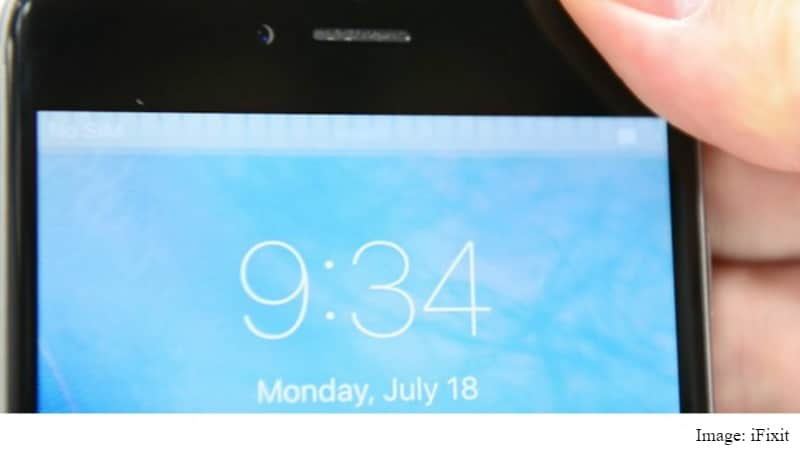
As per third-party repair firms and users on Apple’s support forums, several units of the iPhone 6 and iPhone 6 Plus have been facing a display issue where a grey flickering band can sporadically be seen on top, accompanied by touch responsiveness issues.
Established DIY repair and teardown website iFixit has published a blog post that recounts experiences of several third-party repair firms. Terming it as a “touch disease”, it points to the “pages and pages” of complaints on Cupertino giant’s support forums. Even after many complaints, Apple refuses to acknowledge or address the issue, leaving many users disgruntled.
The grey flickering bar on top sometimes disappears after you apply pressure or you gently twist the device, however it comes back and continues to get worse till the touch display goes completely kaput. When users head to Apple Store with the complaints, their devices are replaced if in warranty, and all those whose devices are out warranty, are merely told that the tech giant does not recognise the problem, and hence cannot provide a solution.
iFixit cites micro-soldiering expert and iPad Rehab’s Jessa Jones, who in a detailed blog post attributes the “epidemic” to be caused by a flawed touch controller chip design, or rather, with the way it is fused to the logic board of the phone.
In both the iPhone 6 and 6 Plus, the Touch IC chips connect to the logic board via an array of itty-bitty solder balls-“like a plate resting on marbles,” Jessa explains. Over time, as the phone flexes or twists slightly during normal use, those solder balls crack and start to lose contact with the board.
“At first, there may be no defect at all. Later you might notice that the screen is sometimes unresponsive, but it is quick to come back with a hard reset,” Jessa explains. “As the crack deepens into a full separation of the chip-board bond, the periods of no touch function become more frequent.” Any drops or heavy handling keep chipping away at the cracked solder balls. Damage enough of them, and the connections between the chips and the logic board are severed, signals are lost, touch gets glitchier, and then goes away altogether.
As Apple is not ready to take the weight of this problem, iFixit advises affected users to head to a third-party repair shop to get their iPhone 6 and iPhone 6 Plus devices fixed. Replacing the logic board or the Touch ICs on the logic board are the only solution.
The issue is speculated not to affect the iPhone 6s and iPhone 6s Plus because Apple fixed the structural issues on the iPhone 6 and iPhone 6 Plus that were causing the problem – the same issues that caused the Bendgate controversy.
Jones explains, “compared to earlier iPhone models, the iPhone 6/6+ is kind of a ‘bendy’ phone. Its slim form factor and larger surface area subject the logic board within the phone to mechanical flexion pressure that no other iPhone has had to deal with.”
[“source-gadgets.ndtv”]










